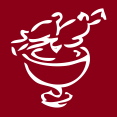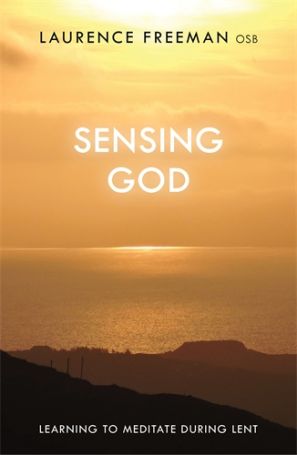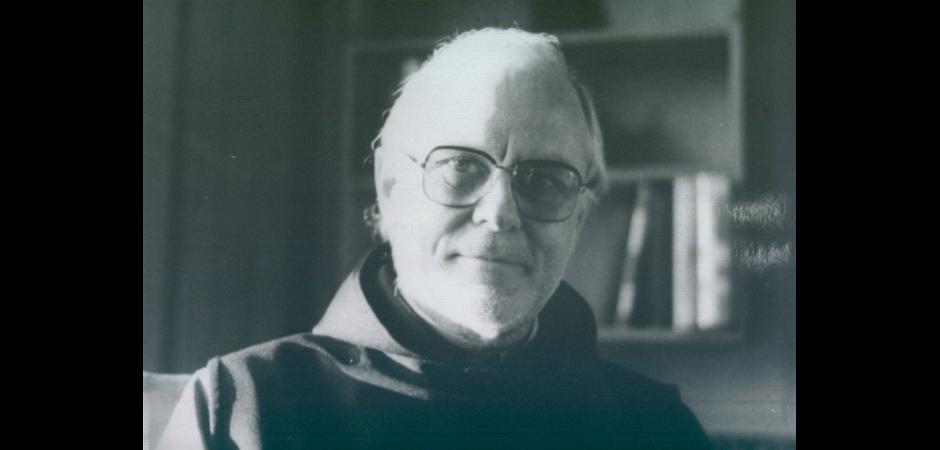In the Logo of the World Community for Christian Meditation the evocative image of a pair of doves perched on the rim of a chalice-shaped dish, as adopted by the World Community for its logo, is heir to an ancient pictorial and symbolic tradition, that was disseminated through the Byzantine and. early-Christian channels via bas-relief, pottery, textile and mosaic.
There are surviving representations of this theme form Greek as well as Roman times, but its ultimate origin is probably Phoenician, connected with the cult and worship of Astarte. The famous mosaic of four drinking doves form the Emperor Hadrian’s Villa, built after 124 at Tivoli, near Rome, was probably the model for the less sophisticated representation found in one of the early Christian churches of Ravenna, the tomb of Galla Placidia which served as inspiration for the logo.
The ultimate origin of the image is one by Sosus of Pergamum made at Delos in the last centuries before the birth of Christ. It was much acclaimed, celebrated and copied throughout the ancient world. The Roman historian, Pliny, admired and wrote about it. A Hellenistic representation, this mosaic displays extraordinary skill and technical ability in its execution and the pictorial representation of a variety of difficult surfaces and textures, such as polished metal with diffused highlights and hard, detailed contours, soft feathers and a slab of marble on which the vessel stands. It is achieved by the intricate laying of minute glass and stone tesserae that denies the medium. There is an excellent copy of this work in the Palatine Museum, Rome.
The iconographic conjunction of water and doves represents a complex, sacred, and very ancient pre- Christian funerary symbolic tradition that has been embraced by, and survived within the Christian Church, with representations of the type found in the decorative programmes of baptisteries and martyria.
The symbolism here is as profound as it is archetypal. It is a trans-cultural metaphor for the universally sacred, that can be apprehended not through empirical information, but through personal experience. Symbols by nature are energy releasing and directing signs, sacraments of an inner reality -one we all share. A poetic reading, therefore, is appropriate to the character and function of a symbol, which is of no value as a fact but only as an awakener of the soul.
An emblem of the universal matrix, water always illustrates the mystical symbolism of the cycle of death- birth -regeneration; i.e. Purification. Informed by its ritual function, this archetype always denotes fecundity and resurrection. Traditionally, it is the female principle in nature, connected to the phases of the moon and life-giving waters. In funerary symbolism, it served to reflect the hope of immortality. i
In Roman funerary monuments, the deceased is often shown as a woman, identified with Aphrodite Urania (heavenly, of the spirit), as she is represented upon the sarcophagus, with her special bird, the dove. By thus identifying with the archetype of life in perpetual renewal, the deceased is ensuring his/her resurrection. Therefore, one can say that the drinking doves of the logo are iconographically akin to the veneration of the mother goddess of pre-Christian religions, having survived within Christianity via Greek and Roman pictorial representations and the writings of the neo-Platonists.
‘…. for it is she we know to be planted deep in our fabric, she it is by whom men
are impelled to have thoughts of love and perform works of peace…’
(Lucretius)
and again
‘You alone can give men the serene benefits of peace’
(Lucretius)
This is Aphrodite, the sacred feminine principle (one of her sacred shrines was at Delos, decorated by drinking doves of Sosus’) not he debased vulgarised Venus of erotic love most of us are familiar with.
‘Such numinous symbols of our inheritance of myth as these’, Joseph Campbell says, ‘become integrated within the Christian Church -images of transformation opening outward to combine with their non- Christian, pagan, oriental counterparts and thereby become transformed into non-sectarian, psychologically significant symbols, revealing a sacred timeless event going on within man/woman always’ ii Carl Jung, in his Symbols of Transformation credits the Logos for filling our understanding and desires with meaning
‘…..makes it drunken as if with nectar’. Nectar, in classical literature, is the drink of fertility and immortality. The soul thus fructified is called the Heavenly Aphrodite (Urania). Yet, it knows the pangs of birth,…..as earthly Aphrodite (Pandemos). It is not without reason that the dove is the symbol of the Holy Spirit iii.
In popular mythology, winged creatures represent spiritual messengers or simply, the Spirit itself, as in angels, the myth of Eros and Psyche (love and the human spirit). The dove of love and peace is also the symbol of the soul in India. In China, it stood for marital fidelity and long life. Usually represented in pairs – male and female – they appear in the headdress of the goddess of fertility. In medieval alchemy, the white dove represents the whitening of the primal matter as it is turned into the philosopher’s stone – the transformation of the black raven into the white dove.
In Christian art, the seven gifts of the Holy Spirit are often seen as doves, perching on a tree or drinking the waters of Eternal life. Thus, we see them in our logo -a pair of doves -one drinking, the other happily standing by -on the rim of a chalice-shaped vessel filled with water. The chalice is a reference to Christ’s sacrifice -as in the Eucharist, and, by the same token, offering us hope of eternal life, an assurance of the Resurrection.
This simple and beautiful representation – the logo of The World Community for Christian Meditation – enfolds a meaning that is both universal and most profoundly Christian – one held sacred through the ages, offering a subjective glimpse into what ultimately is a numinous, transpersonal symbol. A metaphor pointing to a transcendental reality.
Polly Schofield
Montreal Oblate and WCCM Archivist
i Eliade, Mircea. Images and Symbols. Princeton, 1991, p.131-132
ii Campbell, Joseph. Creative Mythology -The Masks of God. Penguin 1968, p.453
iii Jung, C. G. Symbols of Transformation. Bollinger, 1976, p.138




